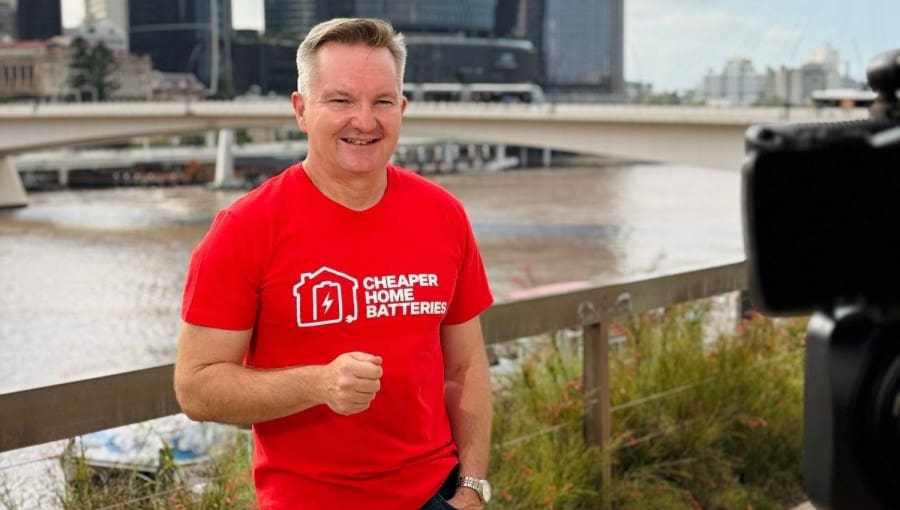
Democracy sausages have been devoured, ballots cast and (mostly) counted, and the people have spoken. Discover what’s ahead for home electrification support in Australia under another round of Labor.
Cheaper Home Batteries Are Go
The home solar battery scene is Australia is about to get very, very busy.
Early last month, Labor announced a government rebate for home batteries should it be returned to office. Operating under the Small-Scale Renewable Energy Scheme (SRES), the Cheaper Home Batteries program will initially provide an up-front discount of around $3701 per kilowatt-hour useable capacity (minus admin fees and charges) for eligible home batteries attached to either new or existing solar installations.
The good news is batteries installed since the April announcement will be eligible for the rebate (assuming other criteria is met), as long as they aren’t switched on before July 1 – the official start date for the scheme. There should also be the ability to “stack” the rebate with state home battery incentives, but there is some devil in the detail that still needs to be worked through.
According to the Clean Energy Council, around 186,000 home battery systems had been installed across Australia by the end of 2024. Labor expects more than one million new batteries will be installed by 2030.
The program will put downward pressure on power bills for everyone, not just households installing solar panels and a battery. This will be achieved through reducing grid demand at peak times when wholesale electricity pricing is most expensive.
Learn more about the federal government battery rebate – we’ll be updating that page with the latest information as it becomes available. We’ll also soon publish an SQ view on the best batteries to get with the rebate; so stay tuned.


Energy Minister Chris Bowen promoting Labor’s Cheaper Home Batteries program
More Investment Cash For The CEFC
The re-elected Albanese Government has also previously committed to a $2 billion expansion of the Clean Energy Finance Corporation.
The $2 billion is earmarked for the CEFC’s General Portfolio, which includes renewable energy generation and storage, electric vehicles and infrastructure investments, along with capital for the CEFC’s asset finance programs providing discounted finance to households, business and farmers.
More Support For SHEPI
Another $500 million for Labor’s Social Housing Energy Performance Initiative (SHEPI), bringing investment to a total $800 million. SHEPI’s focus is on reducing energy bills and emissions for social housing tenants through upgrades such as shading and insulation, energy efficient appliances, solar panels and batteries.
National Vehicle Emissions Standard Enforcement
Effective from July 1, 2025, compliance requirements will be enforced by the NVES Regulator, which will begin issuing penalties to manufacturers breaching the standard. The goal of the NVES is to improve the choice of new fuel-efficient, low or zero emissions cars (primarily electric vehicles) in Australia and slash the nation’s transport emissions. Increased availability is also putting downward pressure on EV prices.
Australia was among the last OECD countries (Russia the other) without mandatory vehicle emission standards, a situation that saw us being a dumping ground for high-emissions vehicles.
EV Fringe Benefits Tax Breaks
Existing Fringe Benefits Tax (FBT) exemptions for EVs, allowing Australians to lease an eligible EV through their employer without paying the tax, will remain. This incentive can also apply to EV home charger equipment purchase and installation depending on leasing arrangements.
National Licensing Scheme For Electricians
In Budget 2025–26, $900 million was earmarked for the National Productivity Fund to drive National Competition Policy (NCP) framework reforms including harmonising electrical licenses across Australia. This will allow electrical workers to work across states instead of needing to apply for separate licences and pay additional fees.
Beyond Home Electrification
Among other energy-related Labor programs to continue are:
- Rewiring The Nation – This program invests in new transmission lines to deliver renewable energy to cities, towns and regional communities; with financing provided by the CEFC.
- Community Energy Upgrades Fund: $100 million for energy upgrades to community facilities, such as heat pumps, energy-efficient lighting and battery storage.
- Future Made In Australia: Aims to make Australia a renewable energy superpower through supporting local manufacturing of solar cells, batteries, and other clean energy technology.
- Community Batteries for Household Solar – $200 million to install 400 community batteries across Australia. Round 2 funding applications through ARENA closed on April 30, 2025.
- Energy Bill Rebates: the $150 energy bill rebate will continue for all households until the end of this year, in two $75 quarterly instalments at a cost of $1.8bn.
Labor remains committed to achieving 82% renewable energy by 2030.
“In 2022, the Australian people voted to finally act on climate change,” said Minister for Climate Change and Energy Chris Bowen (who retained the seat of McMahon). “After three years of progress, in 2025 they said keep going.”
If The Election Had Gone The Other Way
If Federal Election 2025 had turned out differently and the Coalition took the reins of the country:
- The Cheaper Home Batteries program wasn’t supported by the Coalition.
- FTB EV tax breaks for Australians would have been scrapped.
- Expensive gas would have played a bigger role in Australia’s energy future.
- The Coalition’s ill-conceived nuclear power plan would have come into play, which would have also extended the life of coal-fired electricity generation in Australia.
- The $26 billion Future Made in Australia Program would have been axed.
- The $19 billion Rewiring the Nation Program; gone.
- The Net Zero Economy Agency; disbanded.
- New Vehicle Efficiency Standard (NVES) framework would remain, but penalties dumped – leaving the initiative toothless.
… and those were just some of the significant electrification related items in the Coalition’s crosshairs.
So, what now for the Coalition?
With Peter Dutton losing his bid for PM and also the seat of Dickson he held for 24 years, the Liberals will be looking for a new leader. Angus Taylor, Sussan Ley, Andrew Hastie and Dan Tehan are among the names floated to take on the mantle of Liberal leadership. All four have demonstrated consistent anti-renewables form – regardless of what they may say.
Footnotes
- Like the solar panel rebate, the battery subsidy will decrease each year on January 1 until 2030, after which it will be no longer available. ↩






